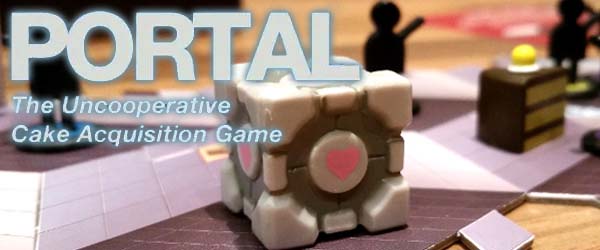
Portal is one of the best and most successful video games ever made. In the current climate of table top board game manufacturers trying to license every property that they can possibly get a hold of, I guess it only makes sense that there would have been a board game based on the Portal video game. But what could a board game designer possibly do with the physics and gravity-bending environmental puzzle-solving concepts of the 2 Portal video games? Cryptozoic's answer was to not even really try. While they did manage to come up with a unique and novel board game design, it's a design that I don't feel really does justice to the title's namesake.
You will be tested, and then there will be cake
Portal: The Uncooperative Cake-Acquisition Game is based around a modular, evolving board concept. 15 tiles are placed on the table in three rows of 5. At the end of each player's turn, one tile is removed from the right edge of the board (the "Old Edge"), flipped over, and moved to the left edge of the board (the "New Edge"). If a player controls a majority of the test subject pieces in the removed tile, he or she is given a set of rewards printed on the tile. This may include being able to place additional test subjects in order to establish more control over the board, being able to place or move a turret or Companion Cube figurine, or placing a victory point token on the board (which takes the form of a plastic slice of cake).
Any player piece(s) on the removed tile are also destroyed. Test subjects are returned to the respective player's supply, but any cake slices (which are victory points) are placed in the "Incinerator", and are removed from the game permanently. The objective of the game, thus, is to place as much cake on the board as you can, while also trying to keep that cake away from the old edge of the board so that it does not become incinerated. What makes this a somewhat challenging puzzle to solve is that the conveyor belt nature of the board is constantly pushing everything towards incineration.
Tiles move from one end of the board to the other, like a conveyor belt.
Each players' test subject tokens can pick up a piece of cake (belonging to any player) and carry the cake with it when the test subject moves. This is how players protect their own cake from the incinerator, but it also allows other players to pick up a rival's cake and move it closer to being incinerated. Thus, the competitive and subversive element is introduced. Players must try to maximize their own resources, while simultaneously trying to minimize their opponents' resources.
Oh, and there's also a couple of portal tokens which allow test subjects to move long distances across the board (and potentially take cake with them). And there's also a GladOS cardboard cutout, which does absolutely nothing except to mark which test chamber tile is being incinerated and recycled. The actual portals in the game's namesake, and the primary villain of the games, thus feel under-utilized. The portals just provide an extra opportunity for long-distance movement, but the game is completely playable without including them at all. They aren't even remotely necessary -- let alone fundamental -- to the board game's design, the way they are in the video game.
Turret and Companion Cube are nice 3-D plastic models,
but GladOS is just a cardboard cutout.
It's also a shame that the GladOS token is not a 3-D plastic model. The turret and Companion Cube are both plastic models and look really nice, so it's a shame that GladOS didn't get the same treatment. If she had, I could easily see this game's pieces becoming part of a nice little display diorama on a shelf somewhere when they are not in use for actual play.
In general, the board game lacks the spatial puzzle-solving element of the video game. The board is constantly in flux, and so a large focus of the game is on manipulating the physical space of the game board, and there is a certain degree of spatial-puzzle-solving present. But from my experience, most of that manipulation feels pretty rote and predictable. While there are certainly the occasional opportunities for really creative plays (especially when ability cards are used to modify various game rules or give the player extra powerful actions), the bulk of the game is pretty straight-forward.
[More]
4d8c2ed3-71aa-4dfa-8725-7de9aa00df1f|0|.0
Tags:Portal, Portal: The Uncooperative Cake Acquisition Game, Portal 2, Cryptozoic, Valve, Steam, GladOS, Cave Johnson, Chell, laboratory, test chamber, cake, turret, Companion Cube, Matt Hyra

Since I have some extra time off for this holiday season, I'm trying to go through some of my backlog of shorter indie Steam games in between bouts of Cities: Skylines and Beyond Earth: Rising Tide. One such game is Facepalm Games' 2013's sci-fi indie hit, The Swapper, which I picked up in a Steam sale like a year ago. The game has also been ported to many consoles, including the PS3, PS4, Vita, XBox One, and Wii U, and the ports were developed by Curve Digital.
Making my clones do the deadly work
The Swapper seems to owe a lot to Valve's mega-hit Portal. Both games' central mechanics revolve around the player character using a futuristic non-weaponized gun (with 2 settings) to solve platforming puzzles and explore an environment. Portal is in full 3-D, whereas The Swapper is a more traditional 2-D side-scroller. The bigger difference however, is that the gun of The Swapper doesn't fire portable wormholes; instead, it allows the player character to instantly create clones of herself, and to swap her consciousness into one of the clones. Once created, these copies move in tandem with the copy that is currently being controlled by the player. The key to the puzzles is to maneuver yourself so that your clones can reach otherwise inaccessible areas or activate switches.
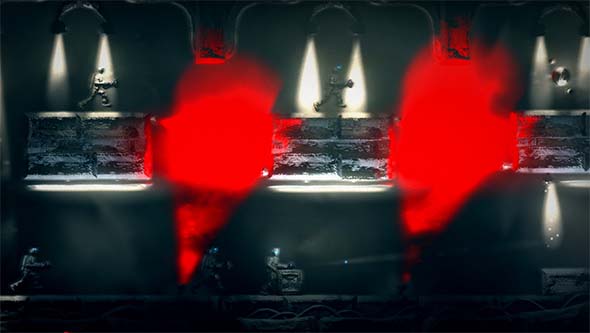
All your clones move in synchronization, making relative spacing very important for solving puzzles.
The space station is laid out in an unbelievable, but serviceable, series of puzzle rooms joined together by modest platforming sections. At first, the platforming between puzzles is interesting because it kept me thinking along the lines of solving puzzles rather than just moving from place to place. But there's a lot of exploration and backtracking, and having to navigate the corridors between puzzle rooms quickly became tedious once using the swapper gun became second nature and automatic. Fortunately, the game provides handy teleporters to allow you to quickly move to key sections of the station, so the backtracking never became as problematic as it could have been.
The puzzles themselves start off fairly simple, requiring that the player simply point the gun and clone herself in order to reach a platform or cross a gap and collect alien orbs that you use to unlock new areas of the space station. The challenge quickly escalates. Soon, obstacles start getting thrown at you, such as colored lights that prevent certain operations of the swapper gun, forcing you to have to find more elaborate ways around the lights in order to reach your destination. You have to start using careful positioning, choreographed movement, gravity, momentum, and inertia in order to successfully solve the puzzles. And all this escalation seems to happen naturally based on the increasing complexity of the levels, rather than through the introduction of new mechanics or controls.
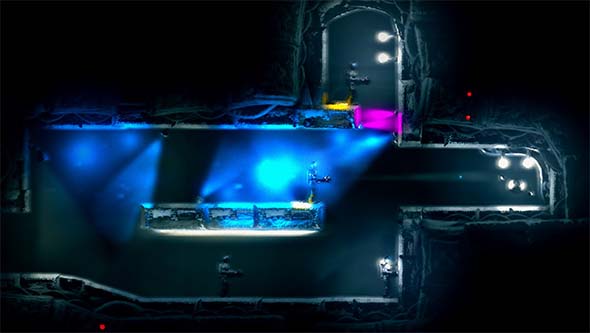
About an hour into the game, I ran into a puzzle that took almost an hour of trial-and-error for me to solve.
About an hour into the game, the difficulty suddenly spiked, and I ran into one puzzle in particular that took me quite a while to figure out. I even had to leave it and come back to it later with a fresh perspective. I thought maybe I was missing some kind of upgrade or needed to learn some technique that the game hadn't tutorialized yet, but that wasn't the case. Eventually, I figured it out, and the solution seemed head-smacking obvious, but I probably spent a good hour on that one puzzle (approximately half of my time with the game, up to that point).
There are also some other sci-fi mechanics such as the occasional zero-g spacewalk, gravity inversion (allowing you to "fall" up and walk on the ceilings), and so on. These all flow fairly seamlessly into the game; although, I did feel that the gravity inversion felt a little unnecessary when it was introduced. After all, the game teaches you fairly early how to use the swapper gun to effectively fly by repeatedly swapping to clones created above you. This "flying", is, however, limited by the number of clones that you can create, and it's still subject to being blocked by colored lights. So gravity inversion felt superficial when introduced as a means of navigating the station. Once the gravity inversion was introduced into the puzzles, though, I recognized its value.
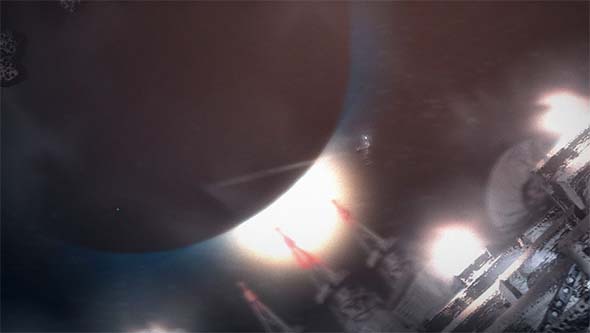
You'll also perform the occasional zero-G spacewalk or invert gravity.
Any problems that I had in solving a puzzle were purely intellectual. Every control and mechanic is intuitive and comfortable, movement is responsive, and I almost never struggled with making the character do what I wanted her to do. All in all, the game plays near-perfectly. The puzzles are appropriately challenging; although, the exploratory nature of the game means that difficulty can wobble back and forth a bit depending on which puzzle rooms you reach first... [More]
8b3a77a8-4dc7-429b-b9ce-44d928af9f86|2|5.0
Tags:The Swapper, Steam, indie gaming, puzzle, platformer, science fiction, cloning, consciousness, identity, self, brain, mind, mind-body problem, space, sentient, alien, Portal

Being someone who appreciates good science fiction and has an interest in real-life space exploration, it's easy for me to become intrigued with any game that promises to let me explore an alien world. Lifeless Planet promised to let me do just that, so it was a no-brainer Steam Summer Sale purchase for me last year, despite the mediocre critical reviews.
The basic premise of the game is that you play as a colonist sent to alien planet thought to be rich in life and habitable for humans. You wake up from cryo-sleep to find your ship has crash landed and your two crewmates are missing. Worse yet, the planet you crashed on seems to be a desolate wasteland devoid of life.
Are you even on the right planet? If so, where's all the life?
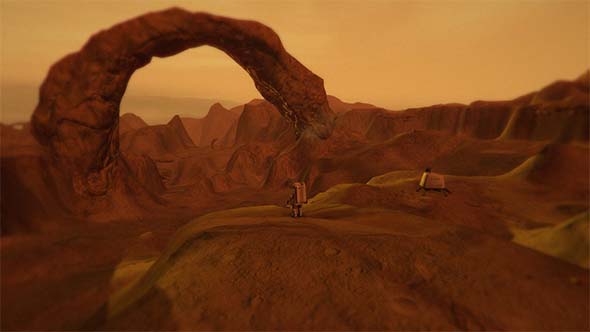
And we're off to find our missing crew-mates and figure out why the planet is lifeless.
From here, you set off to follow the tracks of your fellow crew mates in an attempt to find them and figure out where you are. Things get complicated very early on when you find a long-abandoned Soviet village. Wherever you happen to be, the Ruskies beat you to it!
But this just opens up even more questions: how did the Russians get here? And where did they all go? The mysteries behind these questions are supposed to be the driving force behind the game.
The bulk of the game, thus consists of wandering around the various alien landscapes in search of answers. This exploration requires a moderate amount of fairly trivial platforming, and you stop occasionally solve an elementary puzzle.
Platforming is mostly comfortable and works adequately. You have a malfunctioning jet pack that allows you a small boost to elevate you to higher platforms, jump longer gaps, or soften your fall. I had some occasional problems with the character sliding off of the geometry, and there were a couple areas late in the game that required multiple jumps without stopping that were difficult to control accurately. But other than that, the challenge of the platforming was minimal. The intended route is always obvious, so there was never any question about where I was supposed to go.
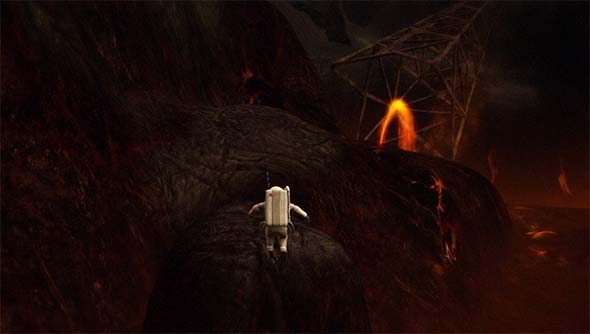
Your jet pack allows you to clear pitfalls and jump over large obstacles.
Puzzles aren't much more of a challenge. They are almost all environmental or physics puzzles that vary from "find the key" to "put the rock in the hole" to "push the boulders". There's nothing here that a grade-schooler couldn't figure out.
The rest of the game is just a steady walk along the linear paths ...
[More]
644391df-c7c0-4240-9d5b-33dfda1071c1|2|3.0
Tags:Lifeless Planet, Stage 2 Studios, Lace Mamba Global, Steam, indie gaming, science fiction, space, exploration, colonization, astronaut, platform, puzzle, adventure, allegory, Soviet Union, Russia, Cold War, portal, alien, plant, radiation, Achievement unlocked
This review was originally published 05/15/2011 on Game Observer (now defunct as of 05/13/2014). It has been republished here for archival purposes.
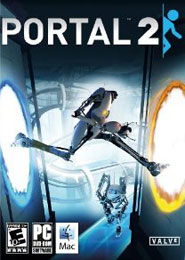
Yes GladOS, we brought you back to life because we really do love to test!
To be perfectly honest, I wasn’t looking forward to this game. I love the first Portal, as it was about as close to "perfect" as any game has ever come, but I couldn’t help but fear that Valve might turn this into a franchise, and in doing so, some of the allure of the game would be lost. But the game was released, and it is a triumph. Mostly.
Apparently, a very long time has passed since the first game. The Enrichment Center is very different. Under the care of the watchful AI, Wheatley, the entire facility has been slowly falling apart. The degrading, decrepit test chambers make for much more interesting visuals than the sterile, white and gray chambers of the first game. They are now overgrown with weeds and vines, panels are falling off the walls, broken glass litters the floors, and fallen and bent metal beams and girders obstruct some of your paths. It’s just too bad that with all the debris and vegetation littering the environment, that none of it is interactive. It slightly breaks the immersion when you walk through dangling leaves and they don’t react to your passing at all.
There is a lot of visual variety in this game. You travel through the dilapidated chambers of the early game until the facility begins to rebuild itself. You watch it piece itself back together. Then you get to travel through the deepest guts of Aperture Science. And finally, you come back to see the test chambers tear themselves apart again
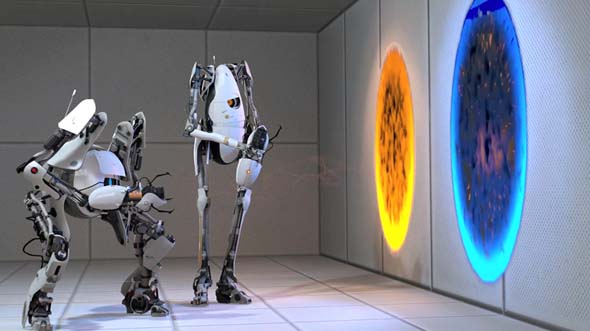
The co-op puzzles are fun, but not terribly replayable. [More]
9e4a4a6b-d12e-4d91-8298-afef9867183b|2|3.0
Tags:Portal 2, review, Portal, Valve, Electronic Arts, EA, Steam, platformer, puzzle, shooter, PC, PS3, PSN, GladOS, hacking, cyber-attack, cloud save, XBox 360
A few weeks ago, I started reading about some new ad campaign that Sony was planning called "Long Live Play". I was kind of disappointed to hear that Sony would be taking a new approach to its advertising, as I actually really enjoyed some of the early Kevin Butler ads. Today, I saw the first advertisement in this new campaign, and it blew me away in terms of creativity and execution!
The full ad is shown below:
While a "love letter" to the gamer in the form of a TV commercial doesn't make up for losing tens of millions of people's Credit Card information, reminding people of why they love to game is a great first step towards bringing back our business. The advertisement above features many of the most beloved characters in the PlayStation 3 library giving heartfelt thanks to the efforts of one valiant gamer for bringing their stories to life and helping them through their greatest perils.
[More]
5b12cc47-f820-4f60-b64a-1ca03f9896c4|1|5.0
Tags:Sony, PlayStation, PS3, PSN, Uncharted, Nathan Drake, God of War, Infamous, Metal Gear Solid, Konami, Solid Snake, Ezio, Assassin's Creed, Ubisoft, Chell, Portal, Valve, Final Fantasy, Square-Enix, Nathan Fillion
|

| 12 | | | | | | | 60 | | 11 | | | | | | | 55 | | 10 | | | | | | | 50 | | 09 | | | | | | | 45 | | 08 | | | | | | | 40 | | 07 | | | | | | | 35 | | 06 | | | | | | | 30 | | 05 | | | | | | | 25 | | 04 | | | | | | | 20 | | 03 | | | | | | | 15 | | 02 | | | | | | | 10 | | 01 | | | | | | | 05 |
|